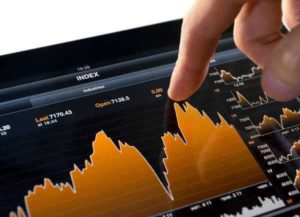In recent months, bankruptcy courts across the nation have delivered a series of unexpected rulings that have sent shockwaves through the legal and financial communities. These decisions not only challenge conventional wisdom about bankruptcy proceedings but also raise critical questions about the future of corporate restructuring and creditor rights. This article delves into the intricacies of bankruptcy court operations, examines the factors contributing to these surprising outcomes, and analyzes their broader implications for stakeholders and the economy at large.
Understanding Bankruptcy Court: An Overview of Its Role and Function in the Legal System
Bankruptcy courts serve a vital function within the legal system, providing a structured environment for individuals and businesses to address insolvency issues. Established under federal law, these courts oversee the bankruptcy process, ensuring equitable treatment of creditors while allowing debtors a chance to reorganize or liquidate their assets. The primary goal is to provide a fair resolution to financial distress, balancing the interests of all parties involved. Bankruptcy courts operate under specific chapters of the Bankruptcy Code, each designed to cater to different types of debtors, from individuals seeking relief under Chapter 7 to corporations restructuring under Chapter 11. The decisions made in these courts can have far-reaching implications, influencing not only the parties directly involved but also the broader economic landscape.
Key Factors Leading to Surprising Bankruptcy Court Decisions in Recent Cases
Several key factors have contributed to the unexpected decisions emerging from bankruptcy courts in recent cases. Firstly, the evolving economic landscape, characterized by rapid technological advancements and shifting consumer behaviors, has created unique challenges for traditional business models. Additionally, the COVID-19 pandemic has exacerbated financial pressures, leading to an unprecedented number of bankruptcy filings. Courts are increasingly considering the long-term viability of businesses, weighing the potential for recovery against the immediate interests of creditors. Furthermore, the rise of alternative financing options and the growing influence of activist investors have introduced new dynamics into bankruptcy proceedings, prompting judges to make rulings that prioritize innovative restructuring solutions over conventional liquidation strategies.
Case Studies: Notable Bankruptcy Court Rulings That Defied Expectations
Recent bankruptcy court rulings have showcased a range of surprising outcomes that defy traditional expectations. One notable case involved a prominent retail chain that, despite facing significant financial difficulties, received court approval for a comprehensive restructuring plan that included substantial debt forgiveness and a pivot to e-commerce. This decision was met with skepticism from creditors who anticipated a more conventional liquidation process. Another case involved a well-known tech startup that, after filing for Chapter 11, was allowed to continue operations while implementing a radical business model overhaul. These rulings highlight a growing trend among bankruptcy judges to embrace creative solutions that prioritize long-term sustainability over immediate creditor recovery, challenging the status quo in bankruptcy law.
The Impact of Shocking Bankruptcy Decisions on Stakeholders and the Economy
The unexpected decisions emerging from bankruptcy courts have profound implications for various stakeholders, including creditors, employees, and the broader economy. For creditors, these rulings can lead to diminished recovery prospects, prompting them to reassess their risk management strategies and investment approaches. Employees of companies undergoing restructuring may face uncertainty regarding job security, yet they may also benefit from innovative business models that emerge from the process. On a macroeconomic level, these decisions can influence market confidence and investment patterns, as businesses navigate the complexities of financial distress. The ripple effects of these rulings underscore the interconnectedness of bankruptcy outcomes and economic stability, highlighting the need for stakeholders to adapt to a rapidly changing landscape.
Legal Precedents: How Recent Rulings Are Shaping Future Bankruptcy Proceedings
The recent wave of surprising bankruptcy court decisions is setting important legal precedents that will shape future proceedings. Judges are increasingly willing to explore unconventional remedies and prioritize the long-term viability of businesses, which may lead to a re-evaluation of established bankruptcy norms. For instance, the acceptance of innovative restructuring plans that prioritize stakeholder engagement over traditional creditor hierarchies could redefine the balance of power in bankruptcy cases. Additionally, the emphasis on sustainability and environmental considerations in restructuring plans may pave the way for a new era of socially responsible bankruptcy practices. As these precedents take hold, they will likely influence the strategies employed by legal practitioners and the expectations of stakeholders involved in future bankruptcy proceedings.
The unexpected rulings emerging from bankruptcy courts serve as a reminder of the complexities and evolving nature of financial distress resolution. As stakeholders navigate these unforeseen outcomes, it is crucial to recognize the lessons learned and the implications for future bankruptcy proceedings. The legal landscape is shifting, and with it comes the opportunity for more innovative and equitable solutions to financial challenges. By understanding the factors that contribute to these surprising decisions, stakeholders can better prepare for the uncertainties that lie ahead, ultimately fostering a more resilient economic environment.






















